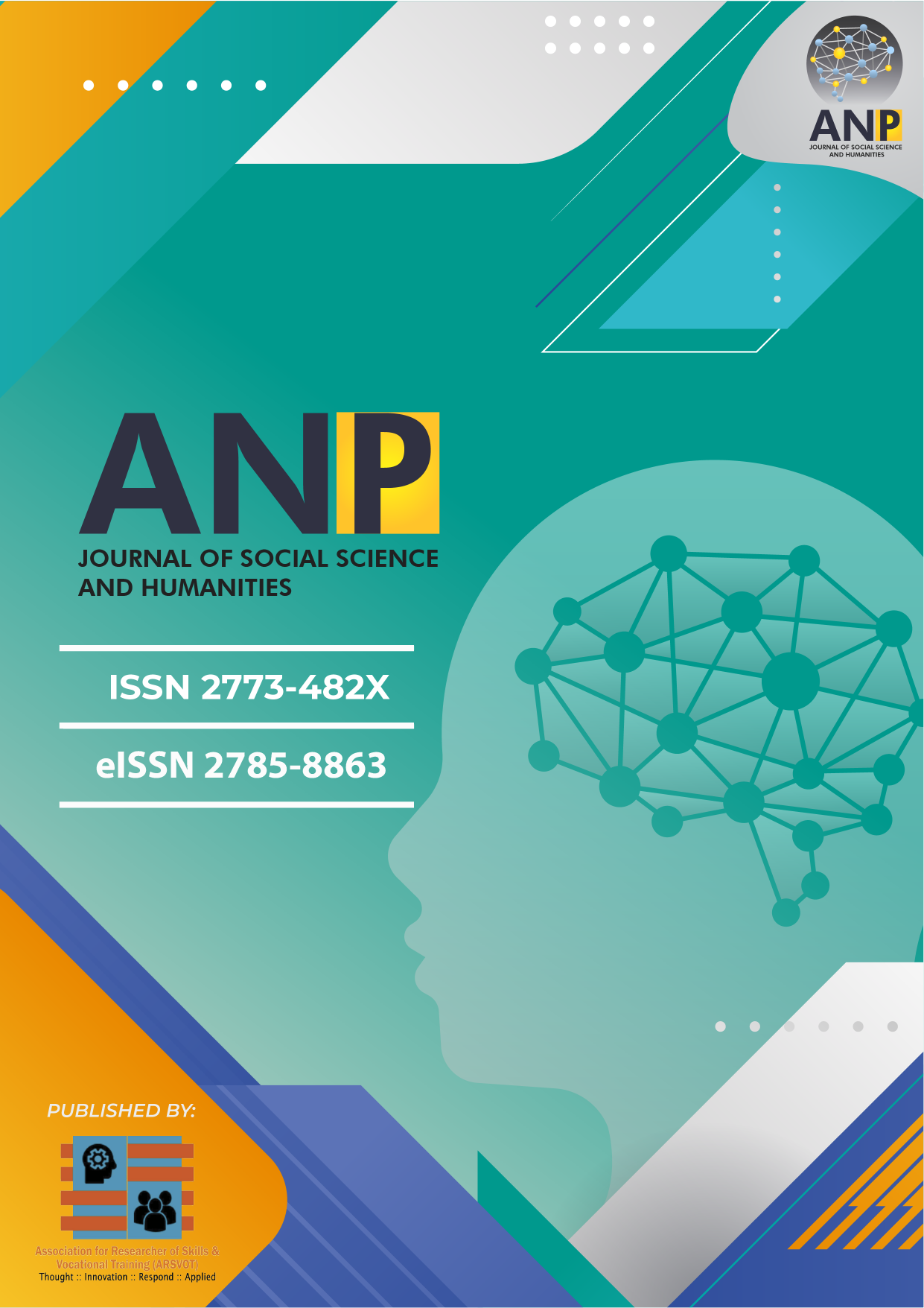Temporal and Spatial Dynamics of Soil Salinity in Wasit Governorate: A Remote Sensing and GIS Analysis
DOI:
https://doi.org/10.53797/anp.jssh.v6i1.11.2025Keywords:
Soil Salinity, Remote Sensing, GIS Analysis, Temporal Dynamics, Spatial Dynamics, Environmental MonitoringAbstract
This research investigates the temporal and spatial dynamics of soil salinity in Wasit Governorate during the hot dry summer season from 1979 to 2022. Using satellite imagery and GIS techniques, the Soil Salinity Index (SI) was analyzed to assess changes in soil salinity levels over the study period. The findings reveal significant temporal and spatial variations in soil salinity, influenced by climatic factors such as temperature, precipitation patterns, and evaporation rates. Overall, there was an increasing trend in soil salinity, with certain years showing higher salinity levels. The study highlights the impact of soil salinity on land degradation and underscores the importance of continuous monitoring and management of soil salinity levels to ensure land sustainability. Recommendations for further research and targeted interventions to mitigate soil salinity are provided. This research contributes to our understanding of soil salinity dynamics and informs strategies for sustainable land management in Wasit Governorate.
Downloads
References
Al-Hameedi, W. M. M., Chen, J., Faichia, C., Nath, B., Al-Shaibah, B., & Al-Aizari, A. (2022). Geospatial analysis of land use/cover change and land surface temperature for landscape risk pattern change evaluation of Baghdad City, Iraq, using CA–Markov and ANN models. Sustainability, 14(14), 8568. https://doi.org/10.3390/su14148568
Atta, H. A. (2020). Assessment and geographic visualization of salinity of Tigris and Diyala Rivers in Baghdad City. Environmental Technology & Innovation, 17, 100538. https://doi.org/10.1016/j.eti.2019.100538
Badapalli, P. K., Kottala, R. B., Madiga, R., & Golla, V. (2023). An integrated approach for the assessment and monitoring of land degradation and desertification in semi-arid regions using physico-chemical and geospatial modeling techniques. Environmental Science and Pollution Research, 30(55), 116751-116764. https://doi.org/10.1007/s11356-022-23002-y
Ben-Dor, E., Chabrillat, S., Demattê, J. A. M., Taylor, G. R., Hill, J., Whiting, M. L., & Sommer, S. (2009). Using imaging spectroscopy to study soil properties. Remote sensing of environment, 113, S38-S55. https://doi.org/10.1016/j.rse.2008.09.019
Hassoon, A. F., & Ibraheem, N. T. (2022). Effect of Urban Expansion Indices Change by (RS) on Height of Convective Radix Layer around Baghdad Airport (Iraq). Iraqi Journal of Science, 2307-2319. https://doi.org/10.24996/ijs.2022.63.5.40
Ibrahim, M. (2016). Modeling soil salinity and mapping using spectral remote sensing data in the arid and semi-arid region. Int J Remote Sens Appl, 6, 76-83. https://doi.org/10.14355/ijrsa.2016.06.008
Kulmatov, R., Mirzaev, J., Abuduwaili, J., & Karimov, B. (2020). Challenges for the sustainable use of water and land resources under a changing climate and increasing salinization in the Jizzakh irrigation zone of Uzbekistan. Journal of Arid Land, 12(1), 90-103.
Kurylyk, B. L., & MacQuarrie, K. T. (2013). The uncertainty associated with estimating future groundwater recharge: A summary of recent research and an example from a small unconfined aquifer in a northern humid-continental climate. Journal of hydrology, 492, 244-253. https://doi.org/10.1016/j.jhydrol.2013.03.043
Lyon, J. G., & McCarthy, J. (Eds.). (1995). Wetland and environmental applications of GIS. CRC Press.
McBratney, A., Field, D. J., & Koch, A. (2014). The dimensions of soil security. Geoderma, 213, 203-213. https://doi.org/10.1016/j.geoderma.2013.08.013
Mosleh Ghahfarokhi, Z., & Bagheri Bodaghabadi, M. (2023). Detection of Vegetation Changes in Agricultural Lands of Sistan Plain, using Remote Sensing Technique. Desert, 28(1), 49-63. https://doi.org/10.22059/jdesert.2023.93538
Muslim, R. I., Issa, M. J., & AL-Obaidi, B. S. (2019). Environmental assessment of heavy metals concentration and distribution in surface soils of Wasit Governorate/Iraq. Iraqi Journal of Science, 60(4), 803-818. https://doi.org/10.24996/ijs.2019.60.4.14
Okur, B., & Örçen, N. (2020). Soil salinization and climate change. In Climate change and soil interactions (pp. 331-350). Elsevier. https://doi.org/10.1016/B978-0-12-818032-7.00012-6
Qassim, Z. H., & Abduljabbar, H. M. (2020, December). Land cover change for Baghdad City in the period 1986 to 2019. In AIP Conference Proceedings (Vol. 2307, No. 1). AIP Publishing. https://doi.org/10.1063/5.0033128
Singh, A. (2022). Soil salinity: A global threat to sustainable development. Soil Use and Management, 38(1), 39-67. https://doi.org/10.1111/sum.12772
Singh, A. (2021). Soil salinization management for sustainable development: A review. Journal of environmental management, 277, 111383. https://doi.org/10.1016/j.jenvman.2020.111383
Shrivastava, P., & Kumar, R. (2015). Soil salinity: A serious environmental issue and plant growth promoting bacteria as one of the tools for its alleviation. Saudi journal of biological sciences, 22(2), 123-131. https://doi.org/10.1016/j.sjbs.2014.12.001
Wang, J., Liu, Y., Wang, S., Liu, H., Fu, G., & Xiong, Y. (2020). Spatial distribution of soil salinity and potential implications for soil management in the Manas River watershed, China. Soil Use and Management, 36(1), 93-103. https://doi.org/10.1111/sum.12539
Wu, W., Mhaimeed, A. S., Al-Shafie, W. M., Ziadat, F., Dhehibi, B., Nangia, V., & De Pauw, E. (2014). Mapping soil salinity changes using remote sensing in Central Iraq. Geoderma Regional, 2, 21-31. https://doi.org/10.1016/j.geodrs.2014.09.002
Zaman, M., Shahid, S. A., & Heng, L. (2018). Guideline for salinity assessment, mitigation and adaptation using nuclear and related techniques (p. 164). Springer Nature. https://doi.org/10.1007/978-3-319-96190-3
Downloads
Published
How to Cite
Issue
Section
License
Copyright (c) 2024 Sattar Teref Razzaq, Malik Naser Abbood

This work is licensed under a Creative Commons Attribution-NonCommercial-ShareAlike 4.0 International License.




